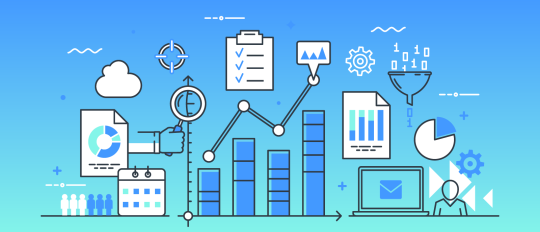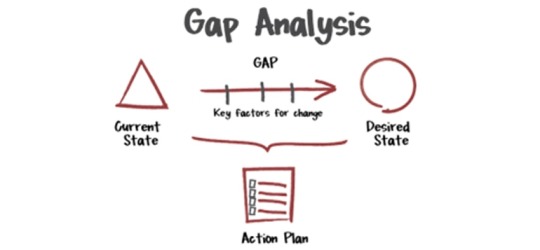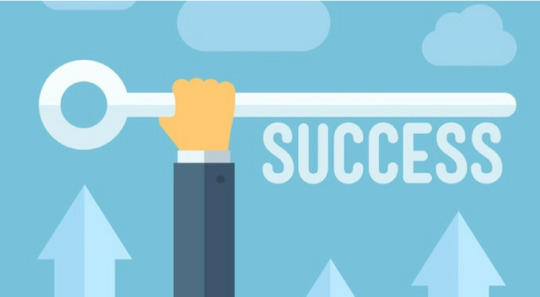Sustainability + Strategy = Success For Aviation/Aerospace Companies
As we begin our last segment, you may still have some questions about how to take the information covered in the previous segments and foster a sustainable strategy. The foundations were laid out in segment one and each pillar of sustainability was examined in segment two. Now it is time to put all the information together to comprehend how all the initiatives can be woven together to create a strategy for aviation and aerospace companies. The critical part is creating a road-map or framework that will guide an organization to a more sustainable future. By now you should have a good grasp of the individual tools required, so let’s now assemble them to create a workable toolkit.
Assembling a toolkit starts with acquiring a single tool and adding others as needed. Let’s put some context to the concepts by providing the tools and tips, and introduce the notion of talent as a component of sustainability. Additionally, we will examine some best practices from industry to complete the picture. Likewise, a sustainable strategy begins with one small initiative that is put into practice and then moving on to put another goal in place. And then add another one and so on. One by one the objectives total up like miles on a road-map. Before you know it, a strategy is in place and the journey is complete. Each tool and idea are important to making meaningful change to reach a sustainable destination.
“From a little spark may burst a flame.”
Dante Alighieri, Paradiso
TOOLS

Gap analysis is the quantitative and qualitative comparison of a company or individual’s current performance (i.e., present state) with potential performance (i.e., future or target state).
It addresses two questions:
- Performance: Where are we?
- Potential: Where do we want to be?
How to conduct Gap Analysis
At the very start, prioritize the areas where either (1) the biggest positive impact exists or (2) you feel the most pain.This could be any one of a host of factors:
- Yearly CO2 emission level
- Electrical power consumption
- Empowerment of inclusion of all, irrespective of sex, race, ethnicity
- Support of a sustainable economic growth of a region
- Just Culture implementation (work ethics)
Once you’ve isolated an area big enough to make an impact, but small enough to wrap your head and hands around…
1. Identify Your States
Once you have chosen your areas of focus, your first step is to identify both where you currently are — performance — and where you want to be in the future — potential.
Your current performance
Every gap analysis starts with introspection. Where are you currently within the metric that you’re analyzing? The idea is to list all the attributes that play a role in success or failure.
The attributes (and thus the analysis) can be quantitative or qualitative. The key is to be specific and factual when identifying possible weaknesses. The required data can be collected from a variety of sources depending on what gap is being analyzed:
- Energy consumption averages
- Historical benchmarks
- Employee well-being after a critical incident (stress management)
The future state represents the ideal condition in which you want your business to be. For quantitative analysis, like tracking numbers of investment in social growth of a region, you would include either data from the industry or projected investments (i.e., goals).
When planning for the future, you can be highly specific (e.g. award 50 scholarships to aviation students in 2019) or generic (e.g. start investing in public schools of underdeveloped regions of the country).
Defined quantitatively, gaps are straightforward. What are the numerical differences between where you are and where you want to be?
Qualitatively, this takes a bit more introspection and collaboration.
2. Describe the Gap
Having identified the gaps, the next step is to describe the gap to better understand the reasons behind their existence.
If you’re currently ahead of your targets, then it’s a great time to analyze what exactly made the results possible and if there are ways to use the same principles in other areas of your company.
Even a well-performing system can always be optimized, so going through this step is crucial.
(1) Gap
This one is easy. Simply carry over the gaps you identified in the previous step, starting with the most underperforming areas first.
(2) Gap Description
The point of a gap description is to record all the contributing factors responsible for the gap. Therefore, the description has to be consistent with those states. These can either be quantitative or qualitative.
However, more often than not, to address the reasons behind the gaps, you’ll use qualitative descriptions.
(3) Why?
The challenging question here is not how far your actual performance fell below target, but why the gap exists. To be of any use, this list has to be specific, objective, and relevant to the issue at hand.
It helps to brainstorm possible causes of poor performance, and then narrow those down using tools like the “five whys” analysis…
Five Whys in Gap Analysis
The “Five Whys” is an iterative technique used to explore the cause-and-effect relationships underlying a particular problem. Its primary goal is to determine the root cause of a problem by repeating the question “Why?” with each question forming the basis for the next question.
Although this technique is called the five whys, it doesn’t mean that you have to ask “Why?” five times. The idea is to repeat the process for as long as it takes to identify the root cause(s). It can take fewer or more than five “whys” before you arrive at the underlying issue.
Let’s look at a situation where air traffic controllers have a poor performance a certain period of time after a critical incident/occurrence has happened.
1. Why do they underperform?
Their lack of self-confidence is caused by poor stress management
2. Why can’t they deal with the stress?
There is no psychological support after the incident
3. Why they don’t have psychological support?
The organisation doesn’t have a Critical Incident Stress Management Program
4. Why is there no CISM program?
The HR staff is not qualified enough to compose the program.
Five Whys Limitations
While the example analysis above did lead to a satisfactory answer, this might not always be the case. The method provides no hard and fast rules about what lines of questions to explore or how long to continue the search for additional root causes.
Thus, the outcome still depends upon the knowledge and persistence of the people involved. Plus, there are situations where a multitude of problems all play a role and it’s extremely hard to decide which one of them is the main root of the gap.
Still, the “Five Whys” can be useful in identifying underlying problems. And, by being aware of the limitations of the method beforehand, it’s possible to use it effectively while steering clear of its shortcomings.
Once we have gone through the process of identifying gaps and the reasons behind them, it’s time to start working on finding solutions.
3. Bridge the Gap
The third and final step is to brainstorm all the possible solutions to the gap and the reasons behind it. These solutions must be specific and directly impact the factors listed in the previous step.
To do that, let’s return to the ATC staff critical incident stress management:
Possible solutions:
- Invite a specialist to train the staff assigned for stress management support
- Direct the ATC staff to existing stress management workshops
By creating an exhaustive list of solutions to the gap-description summary, you enable yourself to think wide and yet position yourself for practical implementation.
When formulating possible solutions, it’s important to keep in mind that there may be implementation costs involved. Those costs can include time, money, and human resources.
Once a gap analysis is completed, identification of tools to help create a sustainable strategy is a logical way to proceed. Here are the five steps to creating a sustainable strategy:
- Understand sustainability and recognize what it means to the company
- Engage with stakeholders
- Set goals and commitments
- Establish systems and processes
- Track progress, communicate actions and meet expectations
Read more: Sustainable Strategy
“Corporate sustainability demands a broad view of issues and impacts, as well as a working understanding of what the company does and how it does it.”
Sounds like we need to look at the big picture inside AND outside the company, correct? Notice any familiar steps? What about number 4 – Establish systems and processes?
TIPS

- Look at your business - where’s your largest impact?
- Link your sustainability strategy to your business plan
- Identify your strategic objectives and perform a sustainability maturity assessment
- Create an ROI model that everyone can understand and report
- Conduct sustainability initiative feedback analysis
- Be inspired by how other actors in your industry work
- Become an expert in sustainability amongst your industry peers
- Define your organization’s sustainability brand
- Be prepared for tough questions
- Involve employees, customers and other stakeholders
- Make sure to create the right mix of stakeholders when executing and communicating corporate sustainability
- Streamline and simplify your sustainability initiatives and management processes
- Consolidate your vendors and establish partnerships based on mutual sustainability initiatives and values
- Revise partnerships and suppliers
- Communicate smart and digitally
- Be transparent
- Revise your strategy (read more)
Number 2 on the list is important but often overlooked by many organizations. A sustainability strategy should not only be linked to the business plan, but interwoven into the fabric of the organizational strategy. Number 13 is another critical area and requires aviation/aerospace companies to treat vendors and suppliers as stakeholders. Pay attention to tip Number 16. Do aviation /aerospace entities need to be transparent? Or is transparency not important in aviation based industries? Number 17 is especially important to keep that strategy from getting moldy! (wink)
TALENT
Now, what about talent as a part of creating a sustainable strategy? Great managers define a talent as “a recurring pattern of thought, feeling or behavior that can be productively applied.” The emphasis here is on the word “recurring.” Your talents, they say, are the behaviors you find yourself doing often.
In this post from The Balance Careers we can see the categorization of skills into soft ones (interpersonal, like communication skills, listening skills and empathy) and the hard ones (job-specific, gained through education, training programs, certifications, and on-the-job training). If you recall from the above, many of the tools and tips required the ability to communicate effectively with stakeholders. Communication skills, whether written or oral, are vital to building sustainable strategies. What other “soft skills” would be helpful to sustainable success? What about critical thinking, problem solving, and conflict resolution?
We also cannot forget that sustainable strategies and organizational emphasis are increasingly studied closely by younger generations.
We also cannot forget that sustainable strategies and organizational emphasis are increasingly studied closely by younger generations.
BEST PRACTICES
To wrap up our readings, review the following resources on sustainable best practices from aviation/aerospace as well as other industries. We do not always have to reinvent the wheel and remember that “imitation is the sincerest form of flattery.”
- Ford, Starbucks, Nike and more
- Embraer: Master Sustainability Plan
- Boeing: Air travel and Sustainability (pay attention to the fuel efficiency per 100 passenger kilometers diagram!)
- Airports Sustainability Declaration
Below are a few brief videos from the aviation and aerospace companies that highlight sustainable best practices and initiatives from several sectors of the industry.
Sustainability is many things but most importantly it is a mindset that must first take root between your ears. From mindset to action is often the most difficult part, but I hope you have assembled some pertinent tools to build a toolkit that will help you move forward to create a more sustainable future for aviation and aerospace. One person and one step at a time is progress! I’d like to leave you with these words from Larry Fink, CEO of BlackRock:
“Without a sense of purpose, no company, either public or private, can achieve its full potential. Companies must ask themselves: What role do we play in the community? How are we managing our impact on the environment? Are we working to create a diverse workforce? Are we adapting to technological change?"




Comments
Post a Comment